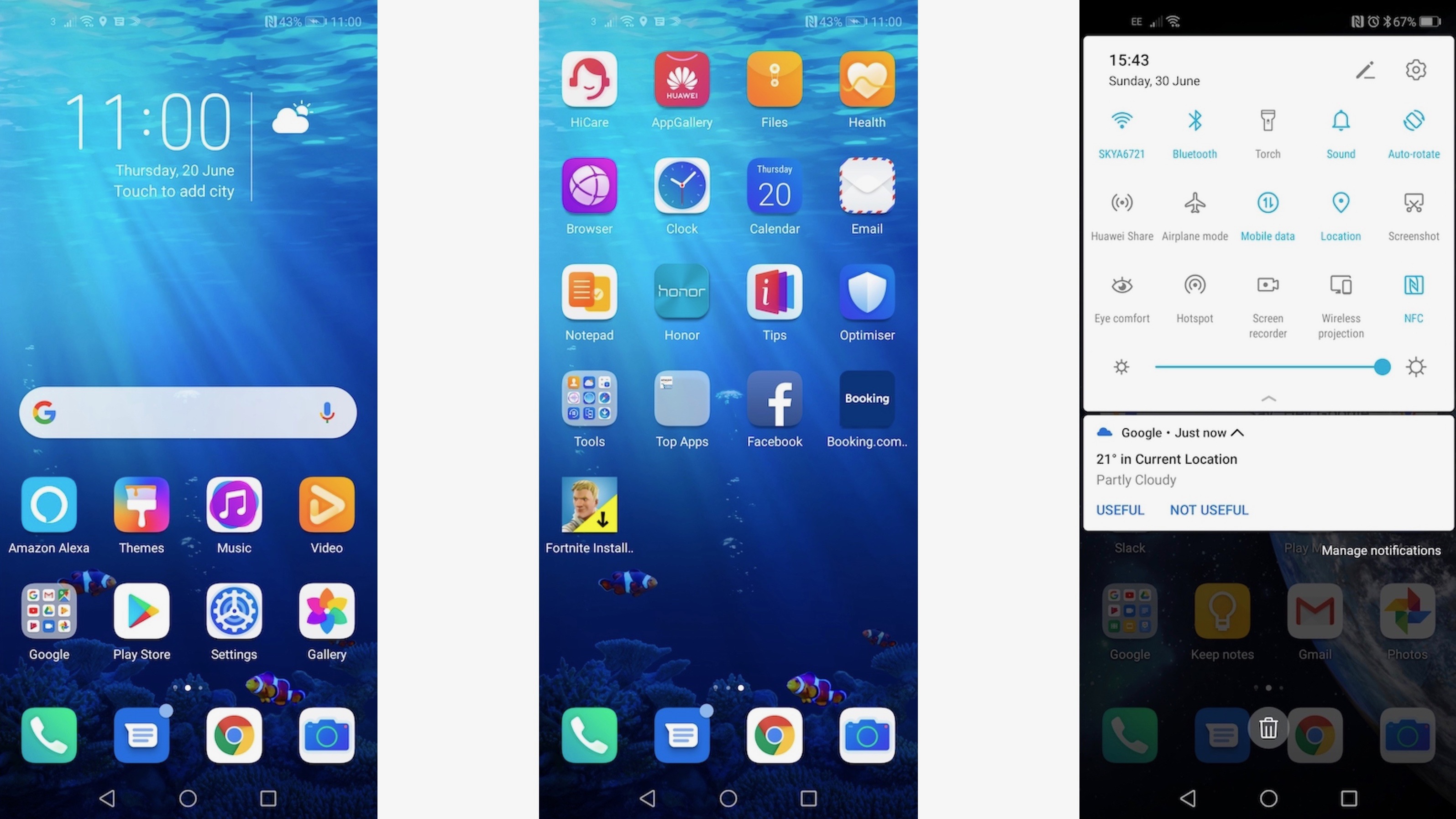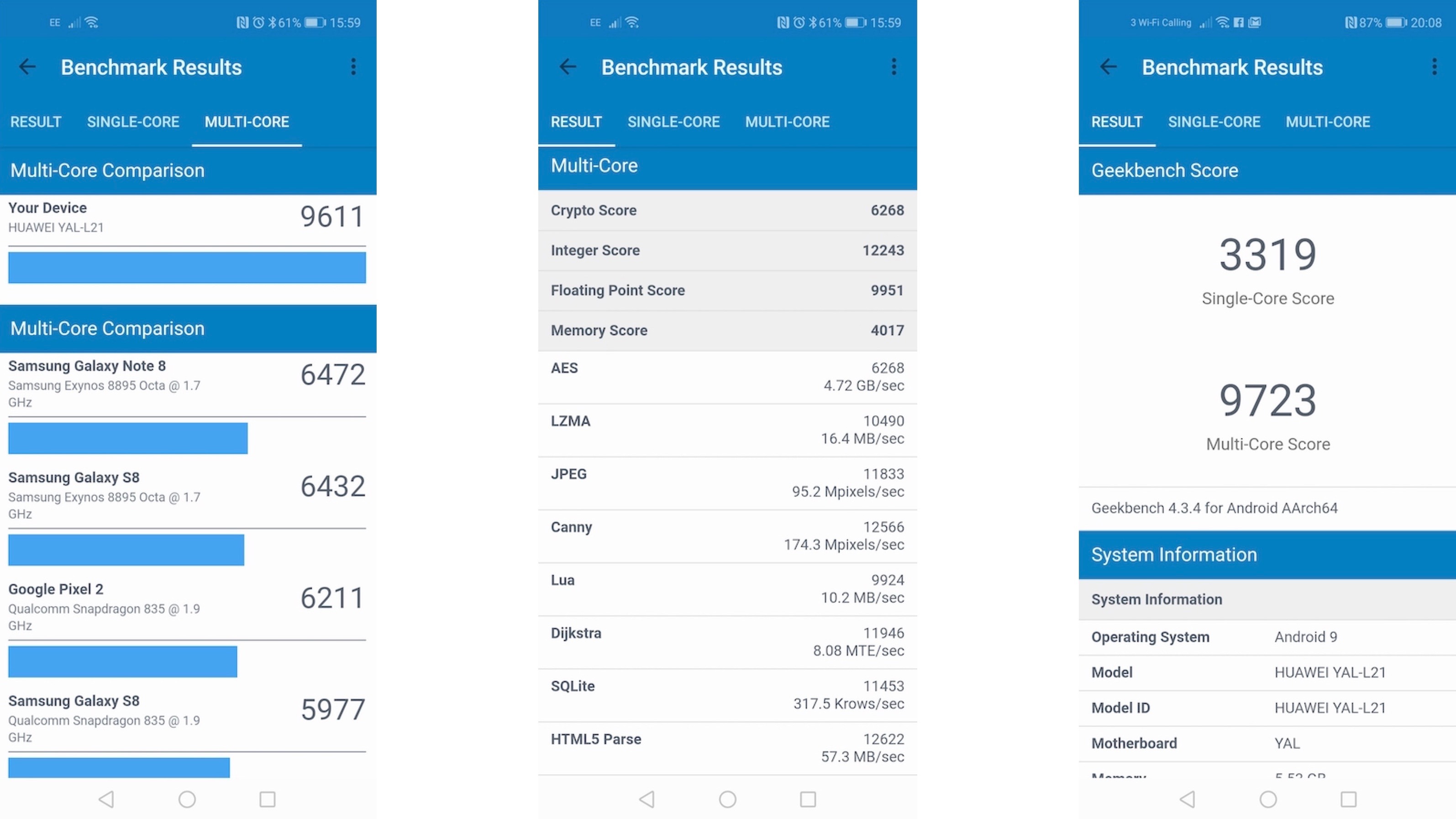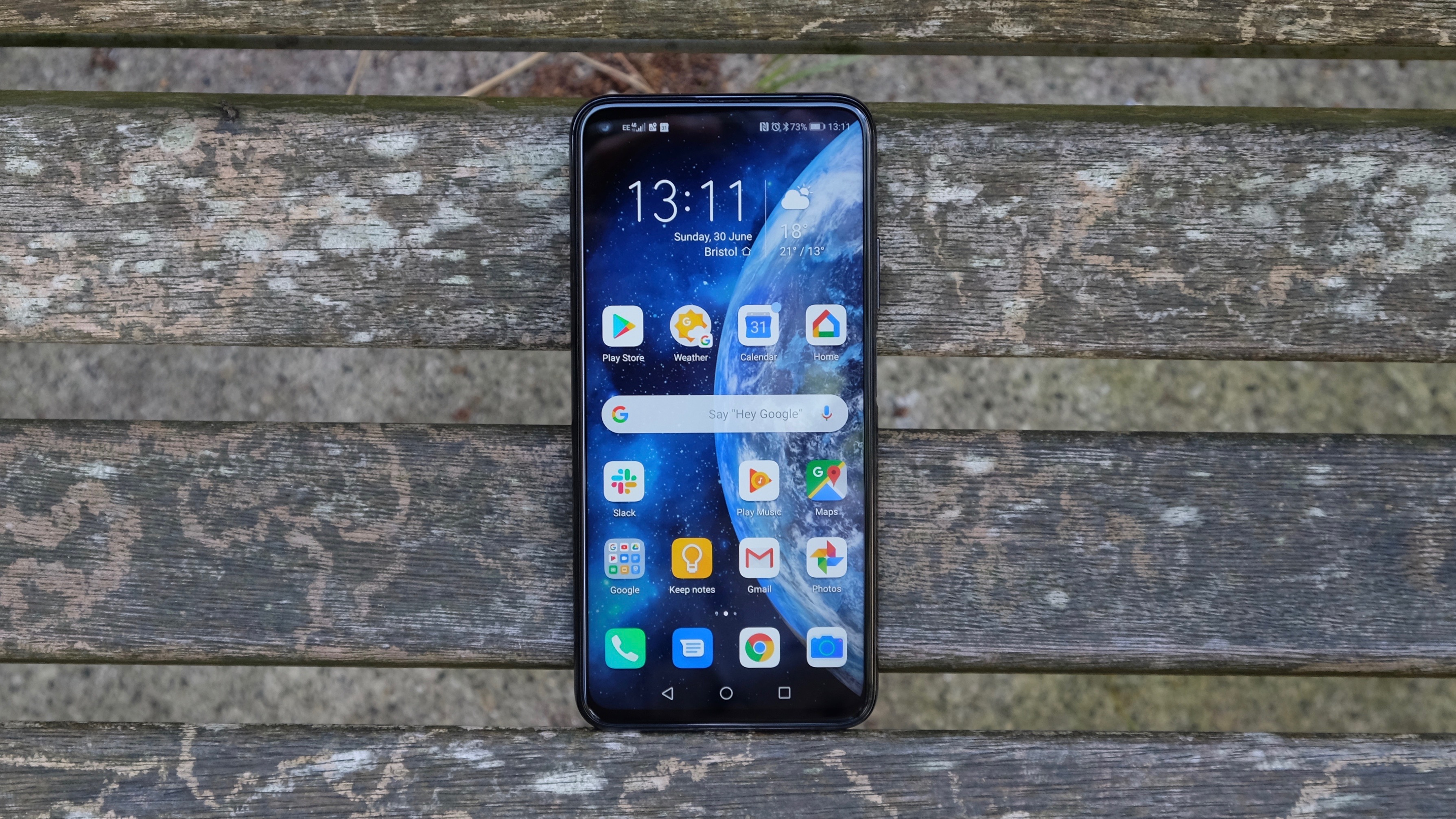Why you can trust TechRadar
Interface and reliability
- Magic UI 2.1 is full of bloat and clutter
- Software is speedy and stable
The Honor 20 runs Magic UI 2.1, which is basically a different name for Huawei’s unloved EMUI.
As a result, software is comfortably the Honor 20’s weak point. We opted to set up the phone as a fresh install with none of our favorite apps receiving an automatic download. We could only laugh ruefully when we were confronted with the Honor 20’s initial home screen presentation.
Here were two home screens worth of superfluous, duplicate, derivative, or just plain ugly applications from Honor/Huawei. The only genuinely desirable ones come from Google, and most of them are crammed into a separate Google folder.

You also get Facebook pre-installed, which we can just about let pass. The Fortnite Installer icon also makes a certain amount of sense, as it’s one of the hottest games around whilst simultaneously being relatively tricky to locate. We have no idea why the Booking.com app is pre-installed, though.
Much of the app icon design takes on a sub-iOS look, and it’s clear that Huawei/Honor holds Apple’s OS in greater esteem than it does stock Android.
There’s just a sensation of naffness or cheapness to this brand of Android. It’s there in the little details, like the excruciatingly schmaltzy default ringtone.

We can’t deny that many of these aesthetic gripes fall away with prolonged exposure. As you customize the experience to your own tastes, tidying away the Huawei stuff, bringing the Google apps to the fore (and installing the likes of Google Keep and Calendar), and replacing the busy default keyboard with Google’s own, it all feels quite pleasant.
Sign up for breaking news, reviews, opinion, top tech deals, and more.
For all its faults, we can commend Magic UI/EMUI for one thing - it runs pretty smoothly. We barely picked up on a stutter or a glitch during our time with the Honor 20. Part of that is down to the phone’s speedy hardware. But credit where it’s due, the software plays a part here.
Movies, music and gaming
- 6.26-inch display is great for visual media
- Single bottom-mounted speaker isn’t ideal
- 128GB of internal storage but no microSD slot
The Honor 20 is a potent media-playing device with a lot going for it. Sure, there are bigger, sharper and more vibrant displays out there, but to get all three in one package you’d need to spend a fair bit more money - or content yourself with an outdated flagship.
There’s a pleasing sense of balance to the Honor 20’s display. Video content looks good on its 6.26-inch canvas, even if the handling of the punch-hole notch leaves much of it looking a little lopsided.
This is the ideal display for gaming content, too, which looks and moves great here.

It’s a shame that there’s only the one speaker on the bottom of the phone, and it’s rather too easy to cover up when playing landscape games. But this is far from unusual at this end of the market.
More damaging is the lack of a 3.5mm headphone jack. Honor does at least include a USB-C adaptor in the box, but it still feels like an annoying work-around.
One thing that the Honor 20 doesn’t lack is storage space for all that media. While there’s no microSD card slot here, you do get an ample 128GB of internal storage. That’s plenty.
Specs and benchmark performance
- Kirin 980 continues to impress
- Geekbench scores place it near the top of the mid-range tree
HiSilicon’s Kirin 980 chipset is one of the older members of the top-end crop, and it has been beaten by the likes of the Snapdragon 855.
But it still does the business in day to day usage, and it still produces the numbers to impress. Indeed, given that this is the same chip that powers the top-end Huawei P30 Pro - a phone which costs over twice as much - it’s even more impressive in the Honor 20.
With 6GB of RAM, the Honor 20 has 2GB less than the Honor 20 Pro. However, it’s more than good enough to run Android and advanced apps without a hitch.

Thanks to this speedy set-up, the Honor 20 blasts through any task you can throw at it. Things like rapid multitasking and windowed video content over a web browsing session didn’t so much as produce a stutter, while the fingerprint unlock process is nigh-on instantaneous.
High-end games, too, are no sweat for the Honor 20. PUBG defaults to high settings and runs like a dream, as does Asphalt 9.
Our Geekbench 4 benchmark tests confirm what we can sense with our own eyes and fingers. An average multi-core score of 9,645 trumps the 9,014 scored by the Nokia 9 PureView with its Snapdragon 845, and absolutely trounces the 5,070 scored by the Google Pixel 3a.
You’d generally need to spend hundreds more to get better performance from the likes of the Samsung Galaxy S10e - though the discounted Xiaomi Mi 9 is a notable exception. Even then, we doubt you’d notice without booting up the benchmark tests.
Current page: Anything else I should know?
Prev Page Battery life and camera Next Page Verdict and competition
Jon is a freelance journalist who has been covering tech since the dawn of the smartphone era. Besides TechRadar, his words and pictures have appeared in The Telegraph, ShortList, Tech Advisor, Trusted Reviews, Expert Reviews, and more. He largely covers consumer technology, with a particular focus on smartphones and tablets. However, he's also been known to dabble in the worlds of entertainment and video games.
